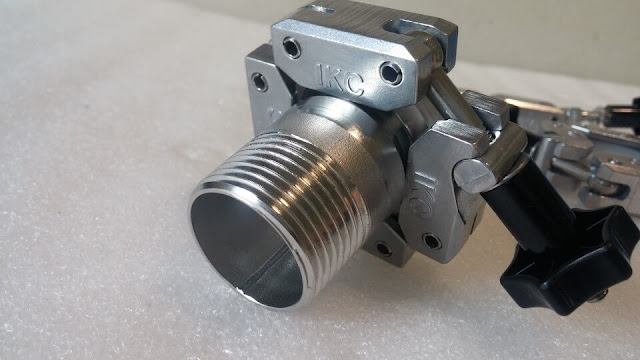What Is Clamping Devices? Requirements of Clamping Devices
Clamping device are used to minimize the distortion during the machining process. Once the workpiece is located, it is necessary to hold it against the machining force. The mechanism used for this is known clamps. They are work holding devices usually positioned above the supporting surfaces. Fibre pads are riveted to the face of clamps where the metallic clamp get contact with the workpiece to avoid damage by metallic contact.
Clamping force to hold a workpiece against locator depends upon
1. Tool forces during operation
2. Positioning method of components
Basic requirement of clamping devices
The following essential requirement should fulfill by clamping devices.- The clamps must hold the workpiece rigidly while machining against all disturbing forces acting on the workpiece. The clamping force should only enough to keep the workpiece in correct position.
- The clamping should not damage workpiece while holding them. The clamp should always contact at most rigid points of the component.
- The clamping should be applied only where the workpiece has enough support of the fixture body. It helps to avoid the bending and damaging of the workpiece due to clamping force.
- The clamping should not interfere the worker or the operation of machine or tool. It must enable worker to work efficiently and safely.
- Time for loading and unloading of the workpiece should be short as possible. I.e. the clamping device must be quick acting.
- Clamping should not loosen during machining process due to vibration and distortion.
General guideline for Clamp design
- Choose simple mechanism over complex ones to reduce the cost of manufacture and for easy maintenance.
- Apply clamping force to heavy parts of the clamp.
- Whenever soft/hollow objects need to be clamped, use pressure pads to avoid damage.
- The material of clamp must have some desirable characteristics such as hardness and toughness.
- To withstand cyclic operation, Heat- treat the clamping parts which are subject to wear and tear.
- Excessive wearable parts must be designed to easily replaceable.
- It is desirable that force applied by the cutting tool should be away from the clamp.


